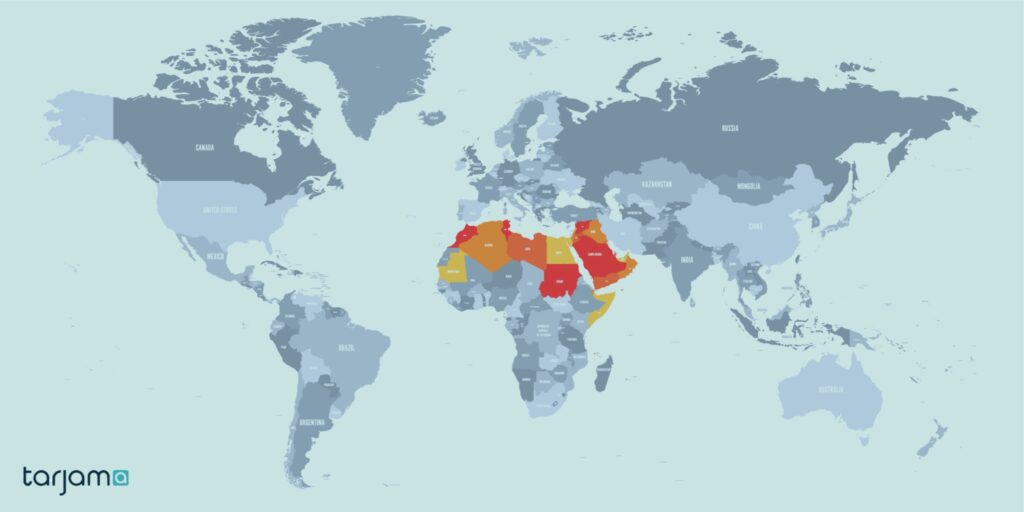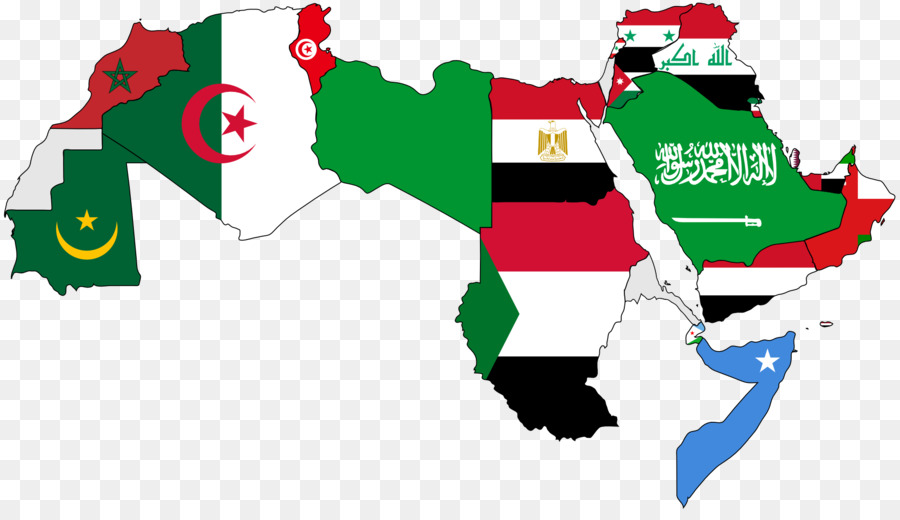The history of the formation and development of the Arabic language
Arabic is one of the most famous languages and is widely used around the world. This language belongs to the Central Semitic group, along with Aramaic, Hebrew, and Phoenician. It is believed that Arabic originated from Aramaic over a thousand years ago, emerging among Bedouin nomadic tribes in the desert regions of the Arabian Peninsula.
In the 7th century, Arabic spread along with Islamic conquests, covering the entire Middle East, North Africa, Central and Western Asia, and even reaching some areas of China. The presence of Arabs, along with their language, religion, and culture, has contributed to the strong development and preservation of Arabic over centuries.
Currently, Arabic speakers have about 30 different local dialects. However, Modern Standard Arabic is the common language used in media, work, Arabic interpretation, and administration. This is also the only form of Arabic taught at all levels of education. Additionally, classical texts, including literary works from the 7th to the 9th century and the Quran, are all written in Classical Arabic.

Map of countries where Arabic is spoken
The majority of Arabic-speaking countries are located in the Arabian Peninsula, the Middle East, and North Africa, an area commonly referred to as the “Arab World.” Currently, there are about 25 countries that recognize Arabic as an official or co-official language, including: Saudi Arabia, Algeria, Egypt, Palestine, Lebanon, Iraq, Jordan, Kuwait, Morocco, Oman, Qatar, Somalia, Sudan, Syria, Tunisia, Yemen, and other countries such as Chad, Comoros, Eritrea, Djibouti, Mauritania, Bahrain, the United Arab Emirates, and Tanzania.
Additionally, there are 6 more countries that regard Arabic as a national language or a recognized minority language, including Turkey, Niger, Iran, Senegal, and Mali.
Today, Arabic is continuing to expand beyond its traditional boundaries. Many Arabic speakers have migrated and reside in other areas around the world such as Southeast Asia, Brazil, Europe, Canada, and the United States, where many generations of Arab descendants continue to use this language.
Below is a detailed overview of countries where Arabic is spoken.
Countries where Arabic is an Official Language
|
No |
Country | Population | No. of Arabic Speakers |
|
1 |
Egypt | 100,000,000 | 82,449,200 |
|
2 |
Algeria | 41,701,000 | 40,100,000 |
|
3 |
Sudan | 40,235,000 | 28,164,500 |
| 4 | Iraq | 36,004,552 |
22,908,120 |
| 5 | Morocco | 35,250,000 |
25,003,930 |
| 6 | Saudi Arabia | 30,770,375 |
27,178,770 |
|
7 |
Yemen | 23,833,000 | 14,671,000 |
|
8 |
Syria | 20,956,000 |
17,951,639 |
| 9 | Tunisia | 10,982,754 |
10,800,500 |
|
10 |
Somalia | 10,428,043 | 3,788,000 |
| 11 | Chad | 10,329,208 |
1,320,000 |
|
12 |
United Arab Emirates | 9,346,129 | 3,607,600 |
| 13 | Jordan | 6,655,000 |
5,083,300 |
|
14 |
Eritrea | 6,380,803 | 249,700 |
| 15 | Libya | 6,244,174 |
4,526,000 |
|
16 |
Lebanon | 4,965,914 | 4,180,000 |
| 17 | Palestine | 4,484,000 |
3,762,076 |
|
18 |
Oman | 4,055,418 | 2,518,816 |
| 19 | Mauritania | 3,359,185 |
3,140,000 |
|
20 |
Kuwait | 2,789,000 | 1,735,000 |
| 21 | Qatar | 2,155,446 |
1,215,900 |
|
22 |
Bahrain | 1,343,000 |
690,302 |
|
23 |
Tanzania | 1,303,569 | |
| 24 | Djibouti | 810,179 |
97,900 |
| 25 | Comoros | 798,000 |
Why is Arabic an important language?
Learning Arabic, especially Modern Standard Arabic, helps you connect with more than 466 million speakers of this language worldwide. Arabic is popular in rapidly developing regions in fields such as business, exports, construction, technology, and many other industries. This opens up numerous collaboration opportunities in both the public and private sectors.
Moreover, proficiency in Arabic can make you a potential candidate for roles in diplomacy and politics in Arabic-speaking countries. Without fluency in this language, you may need Arabic translation services to facilitate effective communication.
Don’t let language barriers prevent you from capitalizing on opportunities in the rapidly growing market of the Arab world!
See more:
Should you learn Arabic? Where to learn Arabic?
Opening doors for Vietnamese goods in the Middle East

